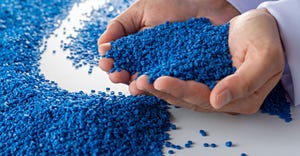By Design: Designing with PPO
In this bimonthly column, Glenn Beall of Glenn Beall Plastics Ltd. (Libertyville, IL) shares his special perspective on issues important to design engineers and the molding industry.You can plate it, leave it in water, and use it in electrical applications with no burning. If you need something better than ABS, go with PPO.
October 1, 2004
In this bimonthly column, Glenn Beall of Glenn Beall Plastics Ltd. (Libertyville, IL) shares his special perspective on issues important to design engineers and the molding industry.
You can plate it, leave it in water, and use it in electrical applications with no burning. If you need something better than ABS, go with PPO.
The initials PPO are the easy way of saying polyphenylene oxide. This is a misnomer for polyphenylene ether, or PPE, which is the European designation. The original PPEs found limited applications due to their relatively high cost. The material was also susceptible to thermal degradation at processing temperatures.
In response to these limitations, General Electric’s (GE’s) John Hay discovered that PPE was completely miscible with polystyrene (PS). Alloying PS with PPE produced a lower-cost material with a broader processing window. In 1966, GE Plastics reintroduced this new material as a PPO under the now well-known trade name of Noryl. This polymer found many applications, but it was a single-source material. Some large potential users, such as the car and computer companies, were apprehensive about specifying a material that was only available from one supplier.
This marketplace opportunity was recognized by Borg Warner (BW), a highly respected supplier of Cycolac ABS materials. In 1982, BW introduced Prevex, a PS-modified PPE with similar properties. This material found a waiting market. Both Prevex and Noryl continued to expand their market share. Sales were 29 million lb in 1970 and expanded to an impressive 227 million lb in 1998. Sales in 2003 are estimated at 300 million lb. GE purchased BW’s plastics business in 1988.
Defining Characteristics
The styrene-modified PPOs are amorphous, opaque, engineering materials known for their stiffness and impact strength coupled with good temperature resistance. Varying the percentages of PPE and PS allows this material to be adapted to many different molding processes and market applications. Filled and fiber-reinforced grades are available, some with Underwriters Laboratories’ 94 flame retardancy rating of V0 and 5V. General purpose, injection molding grades are priced at $1.80/lb or $.068/cu in in truckload quantities. There are too many grades of PPO to be summarized here. One popular flame-retardant injection molding grade of Noryl (N 190) has a tensile strength of 7000 psi and a flexural modulus of 3.25 x 105 psi, with a notched Izod of 7 ft-lb/in and a heat deflection temperature of 205°F at 66 psi. Mineral-filled and glass-fiber-reinforced grades have much greater tensile and flexural strength with higher temperature resistance. Modified PPO is a bridge material that successfully fills the gap between polycarbonate and ABS.
Typical Applications
This versatile material finds uses as communication, medical, appliance, and business equipment and housings. Transportation applications include wheel covers, instrument panels, grilles, and electrical components. This material’s low hydrophilic characteristics allow its use in long-term contact with water for pumps, sprinklers, fittings, tanks, pipe, and water meters. Electroplated parts are used for EMI/RFI shielding, appearance-type plumbing applications, and as automotive and appliance trim. PPO’s excellent electrical properties and nonburning characteristics combine to allow its use as junction boxes and covers, coil bobbins, wiring terminal boards, fuse blocks, fire alarms, exit sign housings, and current-carrying switch gears.
In those instances when ABS or impact styrene is just not quite good enough, PPO is the next best choice.
About the Author(s)
You May Also Like


